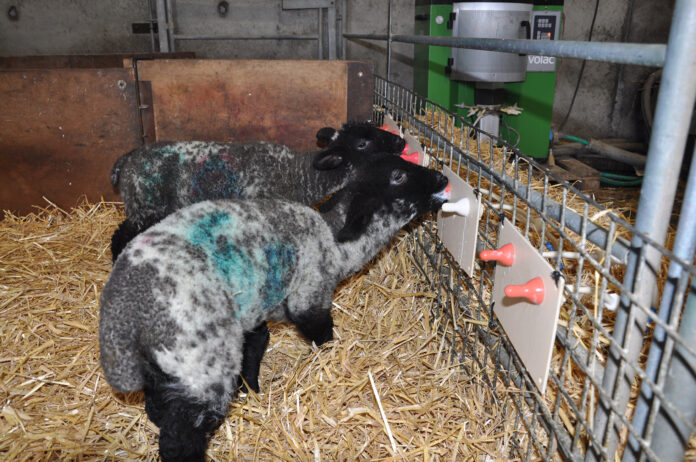Sheep farmers with surplus lambs to rear over the 2024 lambing season are being encouraged to make the most of these newborns’ early life growth potential to boost flock returns.
Maximising the number of lambs sold per ewe put to the ram is one of the key benchmarks for a successful sheep farming enterprise. This will mean rearing some third lambs and orphans off the ewe, explains from Volac Milk Replacers Limited.

“But with lamb prices currently trending 15% ahead of last year, rearing these surplus newborns quickly and efficiently yourself to potentially target an earlier premium market makes sound economic sense.
“And feeding a good quality, proven ewe milk replacer alongside good husbandry practices will help you capitalise on the lamb’s inherent early life, pre-weaning growth potential and be able to wean plenty of excellent extra lambs as soon as possible,” she says.
When it comes to rearing surplus lambs successfully, Dr Cooke advocates following five crucial steps for best results:
1. Don’t compromise with colostrum feeding
As with all newborn lambs, the first priority is to ensure every surplus lamb receives sufficient colostrum (50ml/kg liveweight per feed and a minimum of 210ml/kg liveweight within the first 24 hours). This feed provides essential nutrition, as well as the important antibodies to help newborns fight off infections.
2. Choose the optimum rearing system
Surplus lambs can be reared on milk replacer via bottle, through ad lib bucket feeding or with automatic machine feeding. The method you choose will typically depend on the number of surplus lambs you have and the facilities that you have available.
If you are using a bucket or machine you will need to train lambs to suckle the teat. Be patient. If removing a surplus (e.g. third lamb) lamb from the ewe, take it away at 24 hours old, then leave it for a few hours to become hungry before gently introducing it to the teat. Teats should be positioned 12-15 inches from the ground.
3. Trust Lamlac for higher growth rates
Feeding trials with Lamlac ewe milk replacer at Harper Adams University College and Reaseheath College (2021) have demonstrated surplus lamb growth rates of over 300g per day. All lambs weighed at least 10kg at weaning at 35 days of age.
Additional work at Reeseheath College in 2023 showed lambs reared on Lamlac mixed and fed cold from about a week of age to weaning, drink as much and perform as well as lambs reared on warm milk. This highlights the opportunity to rear extra lambs off ewes on ad lib cold milk where boiler heating capability may be non-existent or compromised.
4. Feed enough milk powder
A single lamb reared artificially to weaning (at an average of 35 days of age) will require a minimum of 9.5kg of Lamlac (equating to 47.5 litres of reconstituted ewe milk replacer).
5. Get your lamb husbandry right
Lambs reared artificially will also need constant access to fresh, clean water at all times. Top quality creep feed should also be readily available to lambs and be offered fresh at least once a day, with refusals being fed to older stock (e.g. ewes). Introduce clean, dry straw – preferably barley into racks. Don’t feed ad lib high quality roughage, for example hay, during milk feeding as this can depress concentrate intake and delay weaning.
For optimum rearing results, don’t keep more than 25 lambs in a pen and keep similar ages and sizes together. Lambs must also have access to a clean, dry, straw-bedded lying area which is well ventilated but draught-free. Check your lambs at least twice a day.
Finally, maintain scrupulous hygiene protocols. For example, all feeding equipment should be thoroughly cleaned each day and disinfected twice weekly.
For further information on successful surplus lamb rearing, visit: www.lamlac.co.uk

| [donate]
| Help keep news FREE for our readersSupporting your local community newspaper/online news outlet is crucial now more than ever. If you believe in independent journalism,then consider making a valuable contribution by making a one-time or monthly donation. We operate in rural areas where providing unbiased news can be challenging. |





















